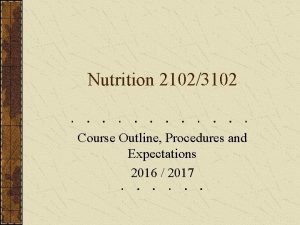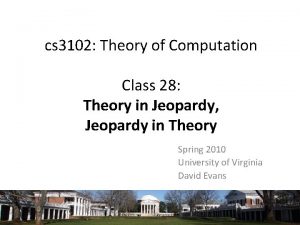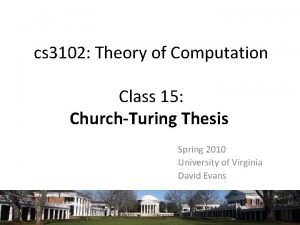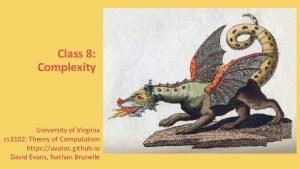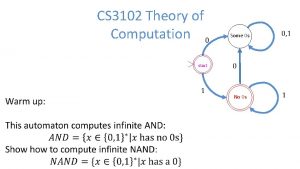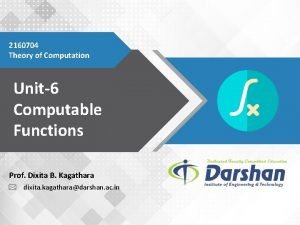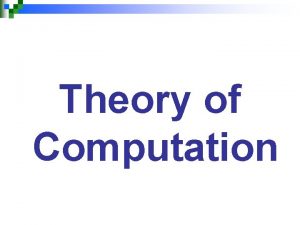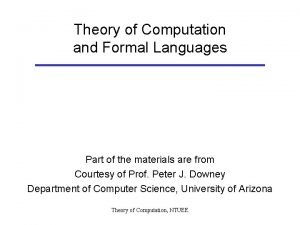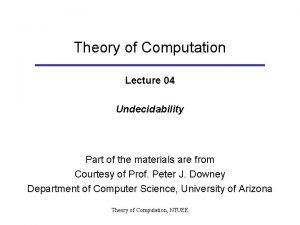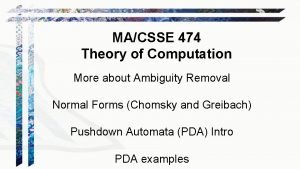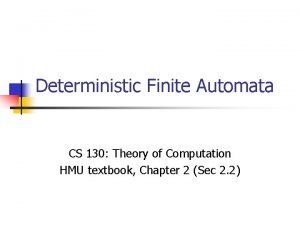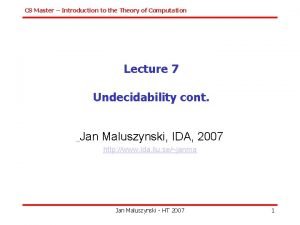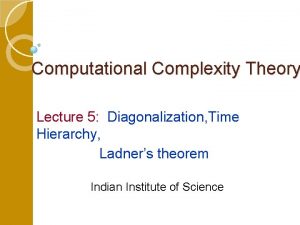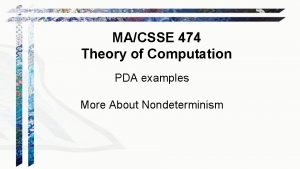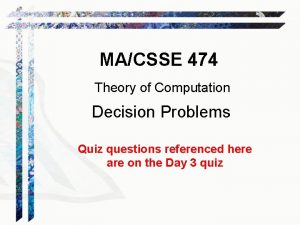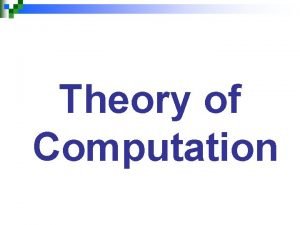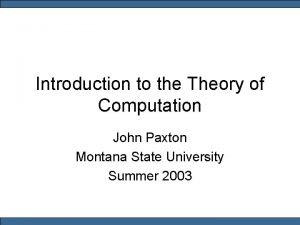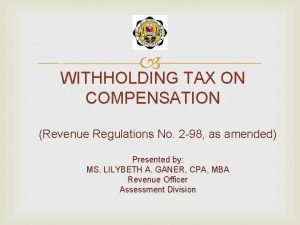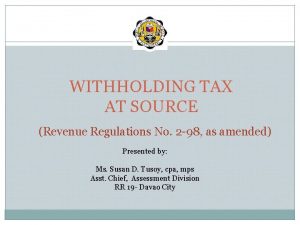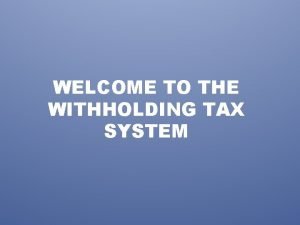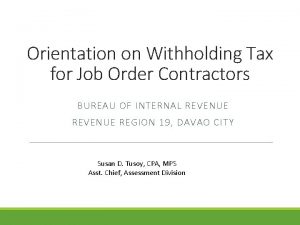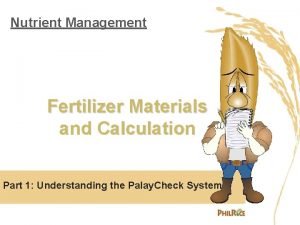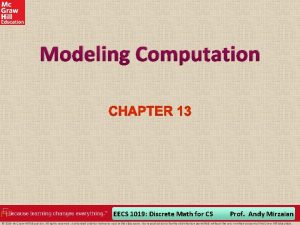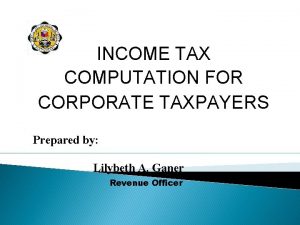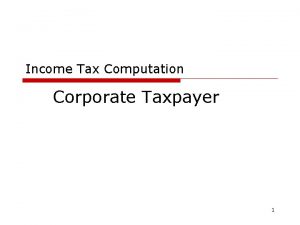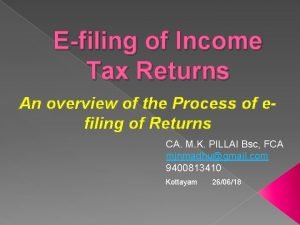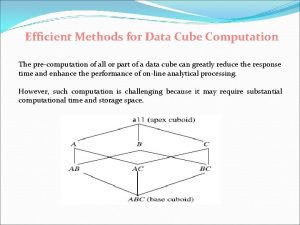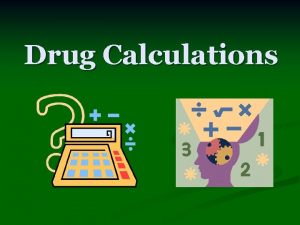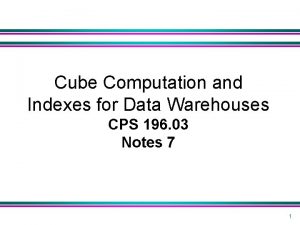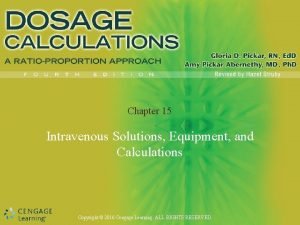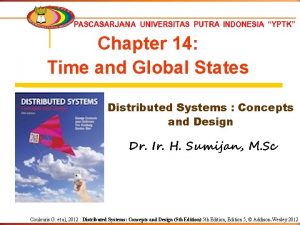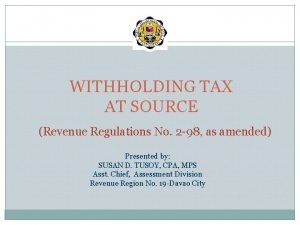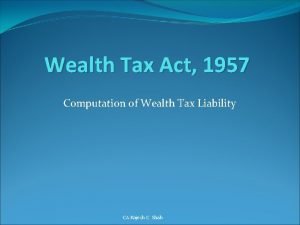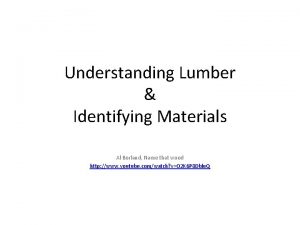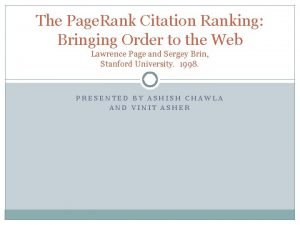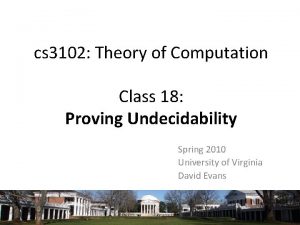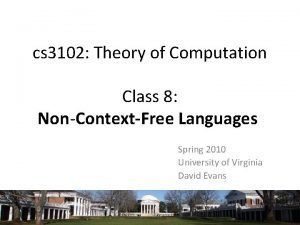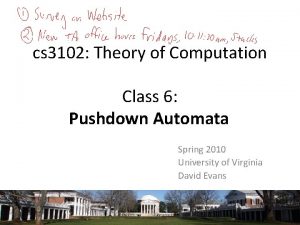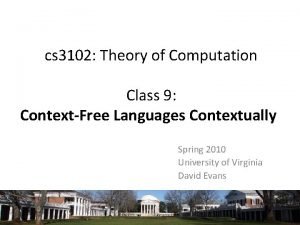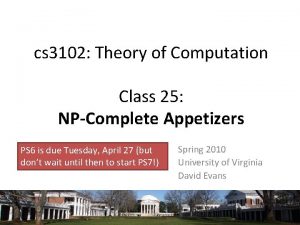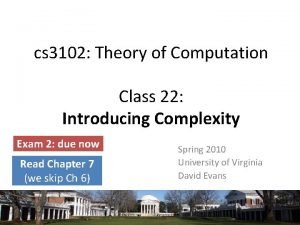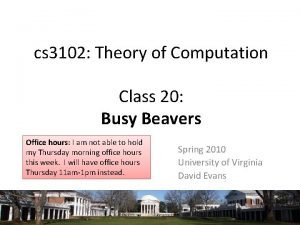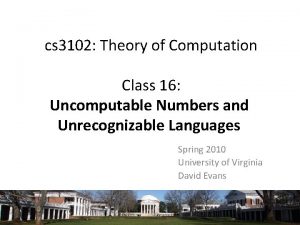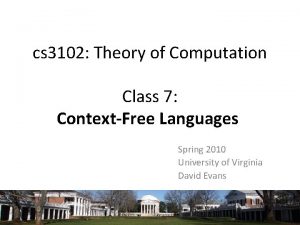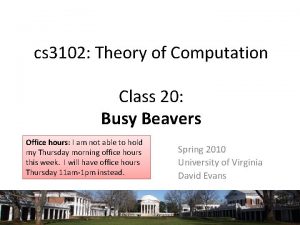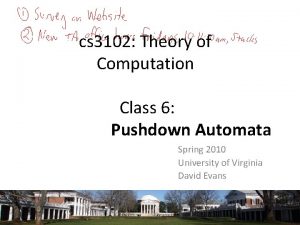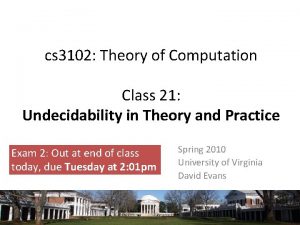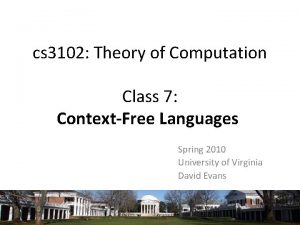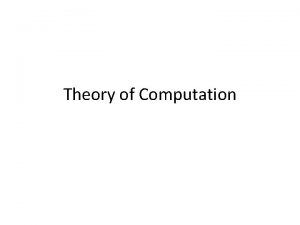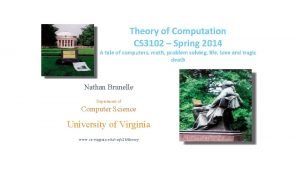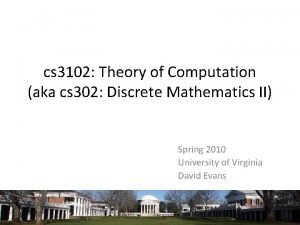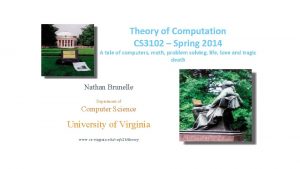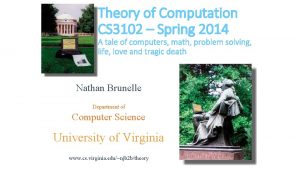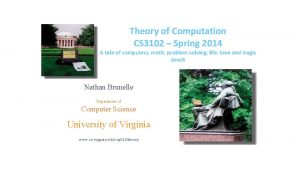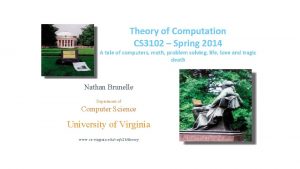cs 3102 Theory of Computation Class 18 Proving





































![Well-Typed Java? public class Test { static public void main(String args[]) { String s; Well-Typed Java? public class Test { static public void main(String args[]) { String s;](https://slidetodoc.com/presentation_image/2448ca7f759354f4912980413edd7a82/image-38.jpg)



- Slides: 41

cs 3102: Theory of Computation Class 18: Proving Undecidability Spring 2010 University of Virginia David Evans

Menu • Revisiting the Halting Problem – Proof by Paradox – Universal Programming Languages • Reduction Proofs • Barbara Liskov’s Turing Award: CLU and Data Abstraction

Halting Problem

Halting Problem is Undecidable

HALTSPython

Suppose halts solves Halting Problem def halts(code): . . . ? . . . >>> halts('3 + 3') True >>> halts(""" i=0 while i < 100: i = i * 2""") False Input: a string representing a Python program. Output: If evaluating the input program would ever finish, output true. Otherwise, output false.

halts(""" def is_sum_of_two_primes(n): for a in range(2, n/2): for b in range(2, n/2): if a + b == n and is_prime(a) and is_prime(b): return True return False i=2 while is_sum_of_two_primes(i): i = i + 1 return False """) Goldbach Conjecture: Every even integer can be written as the sum of two primes. (Open problem since 1742. )

Undecidability of Halts def paradox(): if halts('paradox()'): while True: pass Does paradox() halt? Yes? : If paradox halts, the if test is true and it evaluates to an infinite loop: it doesn’t halt! No? : If paradox doesn’t halt, the if test is false and it finishes. It halts!

Universal Programming Language Universal Turing Machine: a Turing machine that can simulate every other Turing machine – Every algorithm can be implemented by a UTM Universal Programming Language: a programming language that can simulate a Universal Turing Machine – All real implementations have limits (can’t really simulate infinite tape), but all common PLs are effectively universal

Proofs of Undecidability To prove a language is undecidable, need to show there is no Turing Machine that can decide the language. This is hard: requires reasoning about all possible TMs.

Proof by Reduction 0. We know X does not exist. (e. g. , X = a TM that can decide ATM ) X 1. Assume Y exists. (e. g. , Y = a TM that can decide B) Y 2. Show to use Y to make X. Y 3. Contradiction: Since X does not exist, but Y could be used to make X, then Y must not exist.

Reduction Proofs A reduces to B means Y X can be used to make that can decide B that can decide A Hence, A is not a harder problem than B. The name “reduces” is confusing: it is in the opposite direction of the making.

Converse? A reduces to B Y can be used to make that can solve B X that can solve A A is not a harder problem than B. Does this mean B is as hard as A? No! Y can be any solver for B. X is one solver for A. There might be easier solvers for A.

Reduction = Proof by Contradiction and Construction Assume MB is a TM that decides LB. Do a construction using MB to build MA, a TM that decides LA. Since LA is undecidable, MA cannot exist. We have reached a contradiction, so (as long as nothing else is questionable) our assumption must be wrong. This shows LA reduces to LB, proving LB is at least as hard as LA.

Reduction Pitfalls • Be careful: the direction matters a great deal – To show LB is at least as hard to decide as LA, we need to show that a machine MB that decides LB could be used to build a machine MA that decides LA. – To show equivalence, need reductions in both directions. • You can’t assume anything about MB other than it decides LB. • The construction of MA must involve only things you know you can do: otherwise the contradiction might be because something else doesn’t exist. What does can do mean here?

What “Can Do” Means • The transformations in a reduction proof are limited by what you are proving • For undecidability proofs, you are proving something about all TMs: the reduction transformations are anything that a TM can do that is guaranteed to terminate • For complexity proofs (later), you are proving something about how long it takes: the time it takes to do the transformation is limited

Halting Problem is Undecidable What are LB, LA, MB, MA?

Reduction = Proof by Contradiction and Construction Assume MB is a TM that decides LB. Do a construction using MB to build MA, a TM that decides LA. Since LA is undecidable, MA cannot exist. We have reached a contradiction, so (as long as nothing else is questionable) our assumption must be wrong.

Reduction Proof

Equivalence of Machines Is EQDT decidable?

EQDM Is Undecidable Suppose MEQ decides EQDT. Can we use MEQ to decide HALTSTM?

Reduction Proof Assumption MEQ TM that decides EQDT Accept or Reject

Reduction Proof Construction MH that decides HALTSTM MEQ TM that decides EQDT Accept or Reject

MH that decides HALTSTM Constructing MH MEQ TM that decides EQDT Accept or Reject

EQDT Is Undecidable If we had a TM that decides EQDT, we could use it to do something we know is impossible: build a TM that decides HALTSTM.

Empty Language

Proving Undecidability MH that decides HALTSTM ME TM that decides ETM Accept or Reject

Reducing HALTSTM to ETM

Reducing ATM to ETM If a problem is undecidable, any undecidable problem can be reduced to it. (But not all choices are as simple and elegant. )

SQUARE

SQUARE: Valid Proof? Not a valid proof. The reduction is in the wrong direction!

Rice’s Theorem Henry Gordon Rice, 1951 Any nontrivial property about the language of a Turing machine is undecidable. “Nontrivial” means the property is true for some TMs, but not for all TMs.

Generalizing Rice’s Theorem Any nontrivial property about the language of a Turing machine is undecidable. Any nontrivial property about the execution of any universal computing system is undecidable.

Rice Hall

Rice’s Theorem: Proof Sketch H decides HALTS. Thus, MP must not exist. Thus, P must not be decidable. What are we assuming about P?

Which of these are Undecidable? Does TM M accept any strings? Does TM M accept all strings? Does TM M accept “Hello”? Does TM M 1 accept more strings than TM M 2? Does TM M take more than 1000 steps to process input w? Undecidable Decidable Note: for PS 5 problems 2 and 4, you may use Rice’s theorem to get an intuition about the right answer, but cannot use it for your proof.

Type Safety >>> s = "hello" >>> s + 3 Traceback (most recent call last): File "<pyshell#1>", line 1, in <module> s+3 Type. Error: Can't convert 'int' object to str implicitly Not decidable: very sketchy proof: halts(P) = not well. Typed (‘remove. Type. Errors(P); s = “hello”; s + 3’)
![WellTyped Java public class Test static public void mainString args String s Well-Typed Java? public class Test { static public void main(String args[]) { String s;](https://slidetodoc.com/presentation_image/2448ca7f759354f4912980413edd7a82/image-38.jpg)
Well-Typed Java? public class Test { static public void main(String args[]) { String s; s = "Hello"; s = s + 3; System. out. println("s = " + s); } } public class Test { static public void main(String args[]) { String s; s = "Hello"; s = s - 3; System. out. println("s = " + s); } } > javac Test. java > java Test s = Hello 3 > javac Test. java: 5: operator - cannot be applied to java. lang. String, int

Type Safety WELLTYPEDJAVA(<P>) = { P is a Java program that does not use type casts or array assignments and P never produces a run-time type error. } This is decidable: your Java compiler should do this (and should always terminate)!

CLU Type Safety WELLTYPEDCLU(<P>) = { P is a CLU program and P never produces a run-time type error. }

Thursday’s Class
 Nutrition 2102
Nutrition 2102 Cs 3102 uva
Cs 3102 uva Uncomputable numbers
Uncomputable numbers Cs 3102
Cs 3102 Cs 3102 uva
Cs 3102 uva Veoa vs vra
Veoa vs vra Uva lookup computing id
Uva lookup computing id Sipser, m: introduction to the theory of computation
Sipser, m: introduction to the theory of computation Theory of computation
Theory of computation What is a transition graph
What is a transition graph Theory of computation
Theory of computation Theory of computation
Theory of computation Theory of computation
Theory of computation Automata calculator
Automata calculator Introduction to the theory of computation
Introduction to the theory of computation Time complexity hierarchy
Time complexity hierarchy Anbncn pda
Anbncn pda Theory of computation quiz
Theory of computation quiz Computation
Computation Dfa to nfa
Dfa to nfa The theory of computation
The theory of computation Wtax compensation table
Wtax compensation table Expanded withholding tax computation
Expanded withholding tax computation Expanded withholding tax computation
Expanded withholding tax computation Bir form 1901 job order
Bir form 1901 job order Fertilizer computation examples
Fertilizer computation examples Eecs 1019
Eecs 1019 How to compute for mcit
How to compute for mcit Income tax computation format
Income tax computation format Iv fluid computation
Iv fluid computation Efilingofincometax
Efilingofincometax Data cube computation
Data cube computation Drug calculation formula
Drug calculation formula Data cube computation
Data cube computation Index de computation
Index de computation How to calculate iv fluid
How to calculate iv fluid Cuts of a distributed computation
Cuts of a distributed computation Expanded withholding tax revenue regulation
Expanded withholding tax revenue regulation Net maintainable rent
Net maintainable rent Board feet computation
Board feet computation The pagerank citation ranking: bringing order to the web
The pagerank citation ranking: bringing order to the web The pagerank citation ranking: bringing order to the web
The pagerank citation ranking: bringing order to the web
